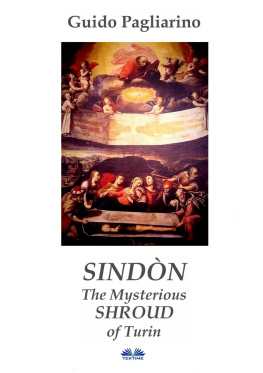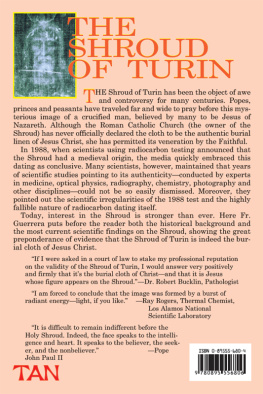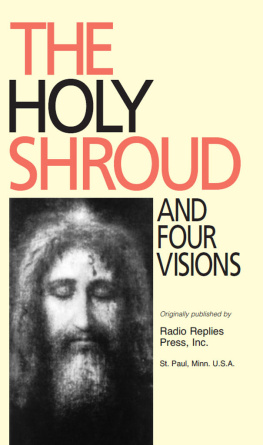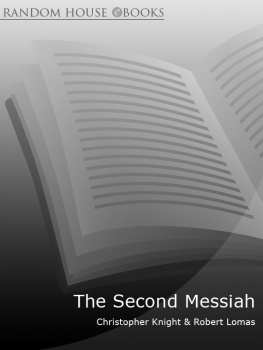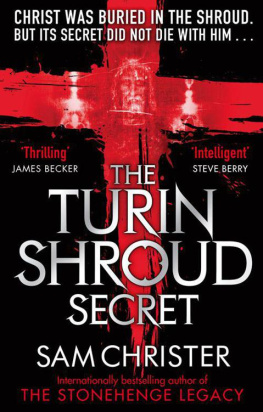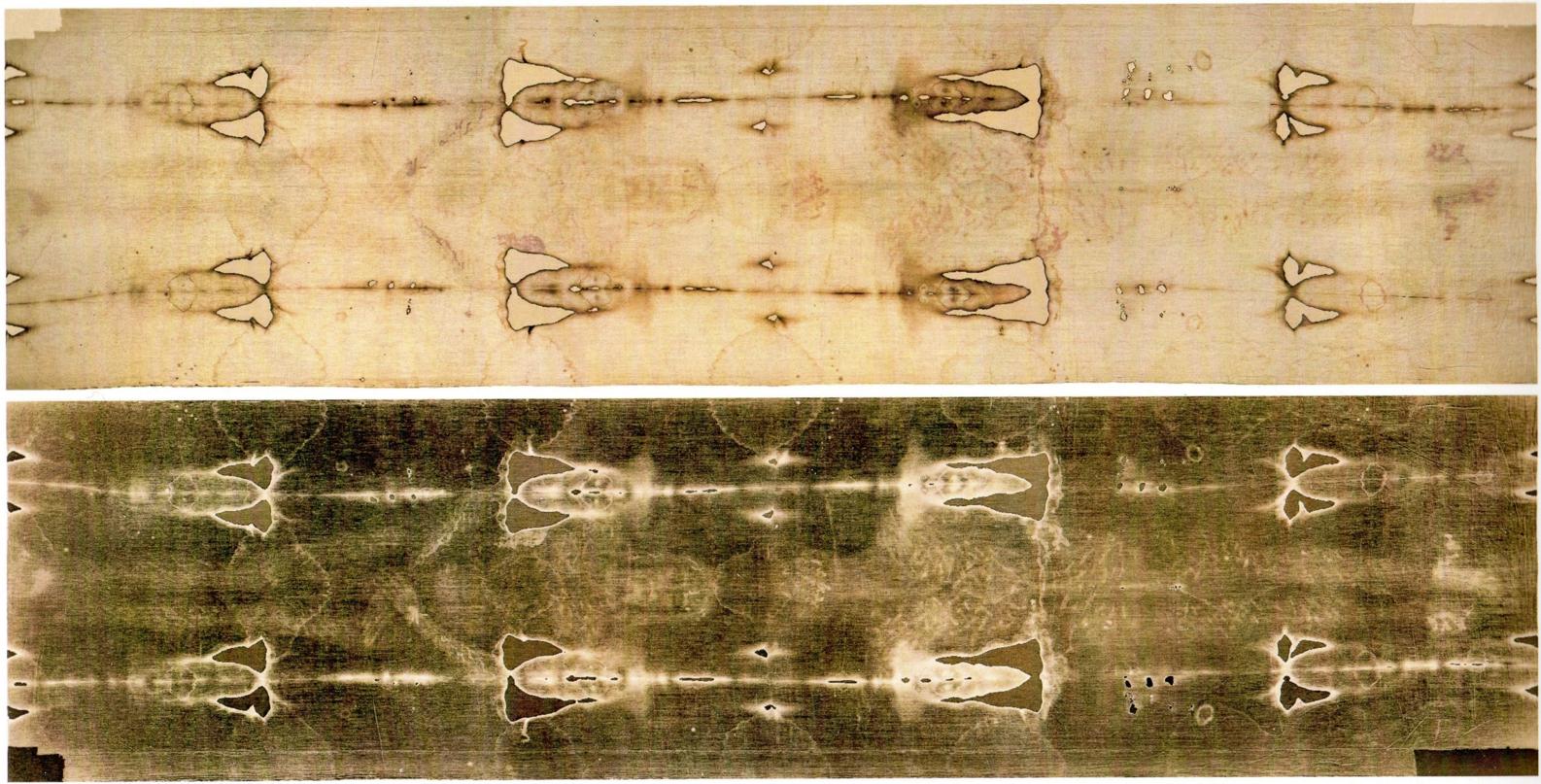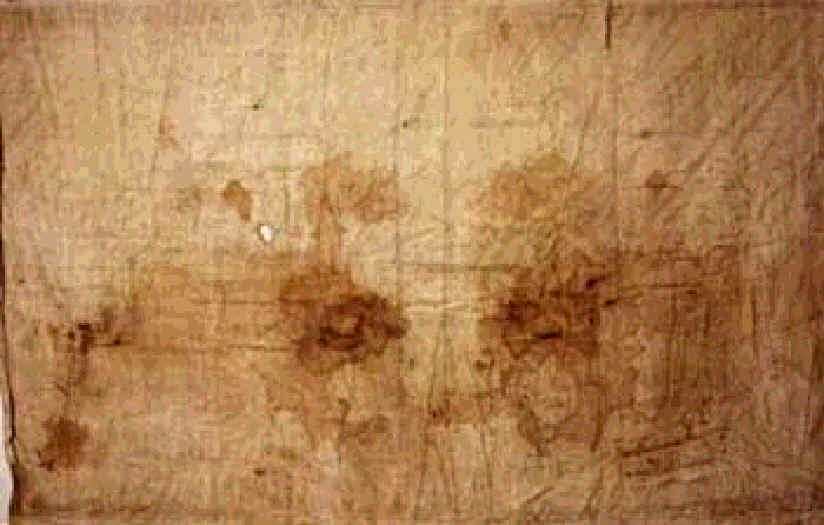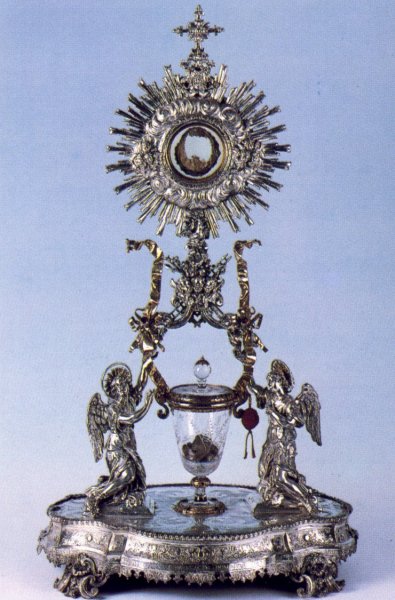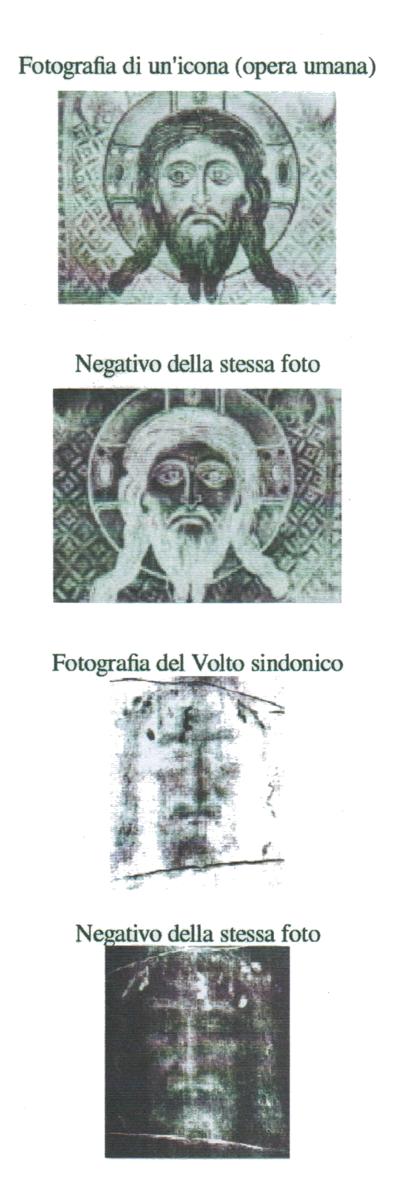Copyright Guido Pagliarino
All rights reserved
Book published by Tektime
Tektime S.r.l.s. - Via Armando Fioretti, 17 05030 Montefranco (TR)
Guido Pagliarino
SINDN
THE MYSTERIOUS SHROUD OF TURIN
Essay
Translation by Annibale Marsili
Guido Pagliarino
SINDN The mysterious Shroud of Turin
Essay
Translation from Italian to English by Annibale Marsili
Tektime Distribution
20 Guido Pagliarino - All rights belong to the author
Previous editions:
First printed edition: La misteriosa Sindone di Torino, 2007-2012 Boopen Editore
Second revised and enlarged printed edition and first e-book edition [only Pdf]: Sindn la misteriosa Sindone di Torino, 2013-2014 Editrice GDS. This edition is out of print from 2015, and all the rights are returned to the author
Third edition only on e-book mobi Amazon and epub Kobo, by the author, 2015 Guido Pagliarino
Fourth edition on printed book and e-book, all formats, Tektime distribution 2019 Guido Pagliarino
On the cover: One of the two paintings by Giovanni Battista della Rovere il Fiammenghino depicting Jesus wrapped into the Shroud
The general and detailed photos of the Shroud inside the book belong to the Catholic Church, therefore they belong to all of us
TABLE OF CONTENTS
Chapters and paragraphs
-
-
-
-
- ?
-
-
-
-
-
-
-
-
-
-
-
-
-
-
-
-
-
-
-
-
-
If it is true that the Cloth par excellence has led many people to embrace or rediscover Christianity, a phenomenon called apostolate through the Shroud . But my belief is always based on the New Testament's books, not on the Sheet. With that idea in mind, I'm publishing this new edition of my essay about the Shroud, by adding new details and adjustments with respect to the book released years ago and the report I promoted online on the occasion of the 2000 Holy Year Exhibition. This work examines certain topics several times, from different perspectives; and the reader should not consider those repetitions as redundant and unintended.
The essay presents:
a general introduction (although some insights are already inside, such as the medical conclusions by the pathologist Pierluigi Baima Bollone);
a section in chapters, with detailed discussion about the topics introduced in the first part (for example, the photographs of the Shroud); and finally a chronology.
Positive and negative image of the Turin Shroud
The Shroud Holy Shroud for Catholics is a linen cloth ( sindn = shroud, cloth) just 0.34 mm thick; the relic's weave pattern is a "herringbone", with a technique used two thousand years ago in Egypt (there are even five-thousand-year-old Egyptian artifacts) , in Palestine and in other Middle Est areas; the yarn is described as a "Z-twist" (clockwise twisting), unlike the "S-twist" process (counter-clockwise twisting) used in later times . The Archbishop pro tempore of Turin (namely, in office at the time) is its Custodian. The Shroud is housed in Turin since 1578, with some temporary displacements due to wars: such as when the French besieged the city in 1706, or when the Shroud was transferred to the Montevergine Abbey (near Avellino, Italy) to protect it from the bombings when Italy entered the World War II in 1939. It returned to Turin in 1946.
The Shroud of Turin, simply known as The Shroud all over the world, is still a mysterious cloth for the most part.
Several stains, whose origin and interpretation is only partially known, can be found on the Shroud, which is like a photographic negative for some of them and not for others.
Patches and burn marks are clearly detectable on this sheet.
After sampling and analysis by experts, microscopic pollen of plants from Middle East and Alps were found on the Shroud. Furthermore, evidence of aloe and myrrh was identified, along with aragonite (a composition of calcium carbonate, iron and strontium); the latter is a mineral present in Jerusalem, and in particular inside a tomb examined by the University of Chicago researcher Riccardo Levy-Setti who claimed that the two soil, respectively coming from the Shroud and from the Jerusalem grave, were exactly the same type.
Definitely there are AB type clotted bloodstains with trace of human male DNA on the linen cloth, according to studies by several internationally renowned pathologists, such as Pier Luigi Baima Bollone (professor emeritus of Forensic Medicine at the University of Turin).
By the way : It is curious that the same AB group blood was detected on the Sudarium of Oviedo (Spain), a 83x52 cm cloth. These are mirror-like bloodstains and, according to many, they overall would look like a human face
Below, pictures depicting the Sudarium of Oviedo
and
the Ostensory at the Sanctuary of Lanciano with the flesh and a crystal cup containing the clotted blood :
Some bloodstains on the Shroud present blood serum (typical of a postmortem blood); but others, instead, appear to have been produced by a person still alive.
The Cloth definitely suffered burns in the past. For example, the scorch marks resulting from the fire in the chapel of Chambery, Savoy, where the Sheet was safeguarded, on December 4 th 1532 ( see Chronology, 1532 A.D. ) are clearly visible: two charred lines throughout the length of the Cloth; holes, which later were patched up by the Poor Clare nuns of a nearby convent, who also sewed a backing Holland Cloth on the back of the sheet. Those repairs and the Holland cloth were removed during the 2002 restoration of the Shroud.
Burn marks
charred line ___ hole O
The back and front image of a human body is clearly imprinted on the linen cloth. Essentially, this figure appears as a photographic negative; but, once exposed on a photographic film, or earlier on a photographic plate, it emerged as a photographic positive . It is as the Man on the Shroud had looked himself in the mirror and his reflected image had been imprinted on it as a photographic negative: like in each negative and like in a mirrored image, the right side appears as the left one, and vice versa .
For clarity, I'm going to compare a positive and negative picture of a Byzantine painted icon with a photographic positive and negative of the Shroud Man's face:
1) Photograph of an icon (by human hands)
2): Negative of the same photograph
3)Photograph of the Shroud's Face
4) Negative of the same photograph
The lines crossing the Shroud Face's hair and beard are two folds on the sheet, probably caused by the backing cloth sewed by the Poor Clares Nuns of Chambery on its back after the 1532 fire. They appear positive in the right photo and negative in the left one, unlike the face; likewise the bloodstains, such as one very clear on the forehead, which has a 

